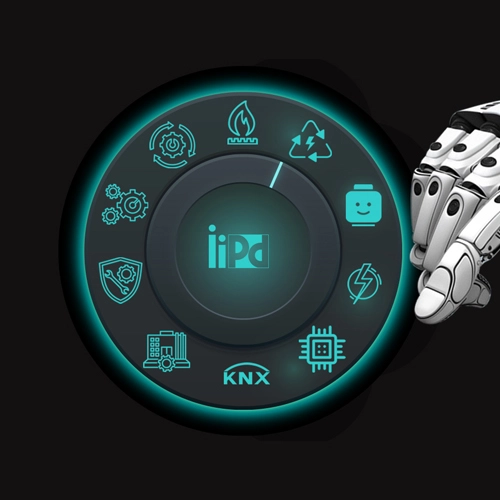Functional process safety involves identifying potential hazardous events that can trigger a chain reaction that could lead to severe or catastrophic consequences. This training explains the requirements of the international standards IEC 61508 and IEC 61511 for functional safety instrumented system and covers the entire life-cycle of safety instrumented systems, from determining risk associated with control systems throughout the project phase. This also includes the separation of basic process control systems and safety instrumented systems (SIS), layers independent protection (LOPs), how to determine safety integrity levels (SILs), technology choices, and field device issues.
This IIPD Global Safety Instrumentation and Emergency Shutdown Systems training primarily focuses on establishing conceptual and detailed design requirements, hazard analysis techniques, safety requirements specification, and the commissioning, operating, and maintenance procedures.
This training will highlight:
- Hazard and Risk Reduction Studies
- Explaining Technology and Equipment Choices
- Safety Requirement Specifications for an SIS
- Selection of Field Devices (Sensors, Programmable Logic Controllers and Valves)
- Establishing Operation and Maintenance Procedures
Course Details
| Duration | 30 hours,5 Days |
| Language | English |
| Location | Dubai, Riyadh,Dammam,Doha |
| Mode | Classroom Instructor-Led Training & Virtual |
| Certificate | KHDA |
OBJECTIVES
This training is to acquaint instrumentation and control system engineers with the essentials of the IEC 61508 and IEC 61511 safety instrumented systems standards and, how they relate to the safety life cycle of developing and maintaining safety instrumented systems. The fundamental tools will enable delegates to evaluate, design, install, and maintain Safety Instrumented Systems (SISs) and determine their Safety Integrity Level (SILs) requirements.
At the end of this training, you will learn to:
- Understand the requirements of the international standards IEC 61598 and IEC 61511
- Apply the IEC 61508 Safety Instrumented System Development ‘Safety Life Cycle’ model
- Determine the Safety Integrity Level (SIL) using risk assessment methods
- Understand the specifications of emergency shutdown protection requirements
- Establish specification requirements for the sensor, programmable logic controller, and valves
- Follow Management of Change (MOC) procedures for control of future SIS changes
WHO SHOULD ATTEND?
This IIPD Global training on Safety and shutdown systems is specifically tailored for anyone involved in the field of emergency shutdown and safety-related instrumentation systems, according to IEC 61508 and IEC 61511 requirements.
- Personnel who are responsible for designing, selecting, specifying, installing, operating, and maintaining safety instrumentation systems
- Experienced professionals who want to broaden their understanding of safety instrumentation systems (SIS)
- This online or offline training is also suitable for a wide range of professional but will greatly benefit:
- Design and Electrical Engineers
- Instrument and Process Control Engineers and Technicians
- Mechanical Engineers and Technicians
- Operations and Process Engineers
- Line Managers and Supervisors
Module 1
- Introduction to Safety Instrumentation Systems
- Overview of Safety Instrument Functions (SIFs)
- Introduction to Standards IEC 61508 and IEC 61511
- Equipment Under Control (EUC)
- Introduction in Identifying Hazards and Analysing Risks
- Safety Instrumented Systems (SIS) - Safety Life Cycle Stages
- Overview of Safety Integrity Levels (SILs)
- Differences between BPCS & SIS
- Integrated BPCS & SIS
Module 2
- Hazards & Risk Reduction
- Identifying Hazards and Risk Analysis Tools
- Preliminary Hazard Analysis
- Process Control vs. Safety Control
- Layers of Protection Models (LOPs)
- Risk Reduction and Risk Ranking Classification
- Determining Safety Integrity Levels (SILs)
- Developing the Safety Requirements Specification
Module 3
- Technology Choices and Reliability Analysis
- IEC 61508 / IEC 61511 Technology Requirements
- Reliability Block Diagrams
- Pneumatic Systems
- Relay Systems and Solid-state Systems
- Microprocessor / PLC Systems
- Issues related to System Size and Complexity
- Reliability of Components Databases
Module 4
- Overview of SIS Field Devices
- Importance of Field Devices
- Types of Sensors
- Final Elements (Control Vales and shutdown valves)
- Nuisance Trips, Voting Schemes, and Redundancy
- Design requirements for Field Devices
- Installation of Field Device concerns
Module 5
- Safety Systems Engineering
- Step-by-Step Safety Instrumentation System Development Plan
- SIS Functional Testing Procedures
- Information Flow and Preparation of Documents
- Managing existing and future changes to an SIS
- Review of an SIS Design Checklist
- Safety PLC’s


